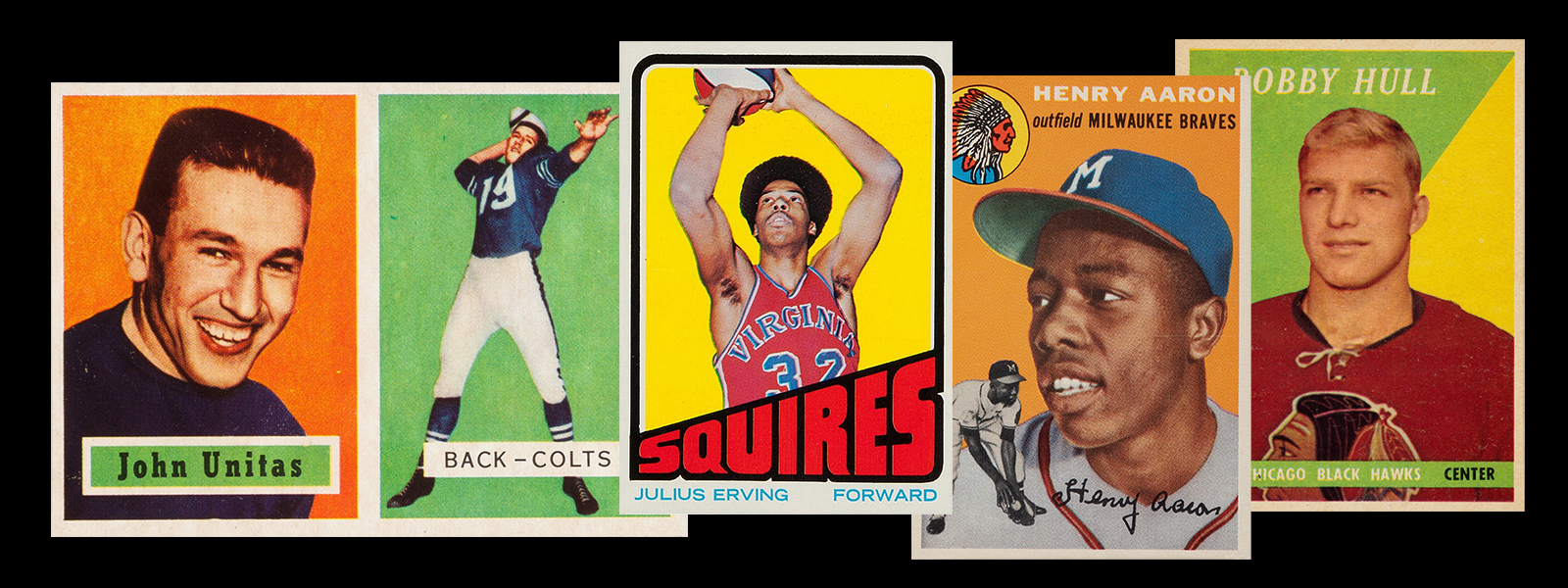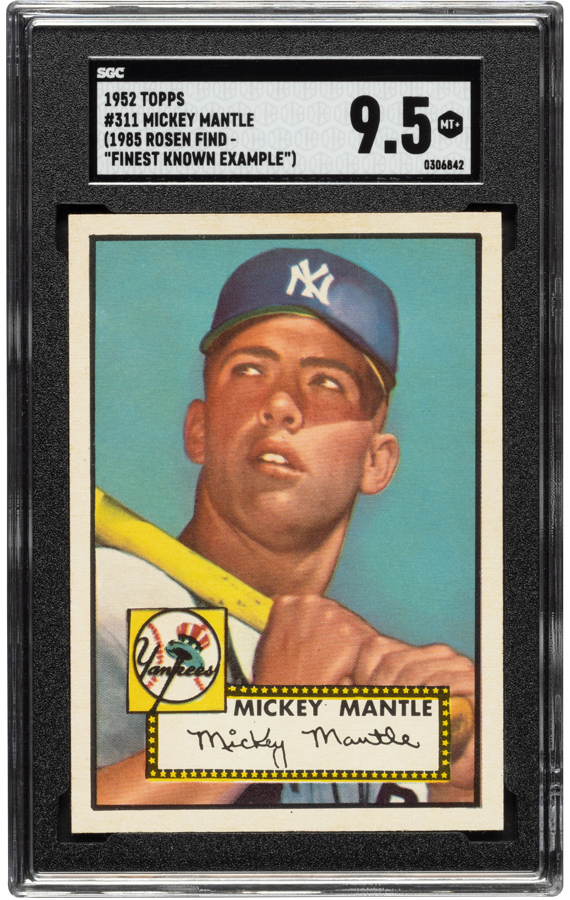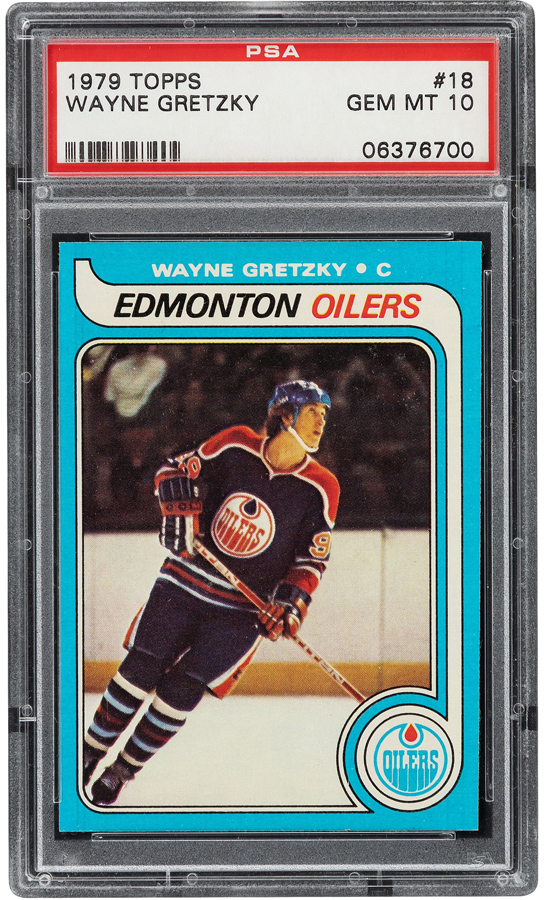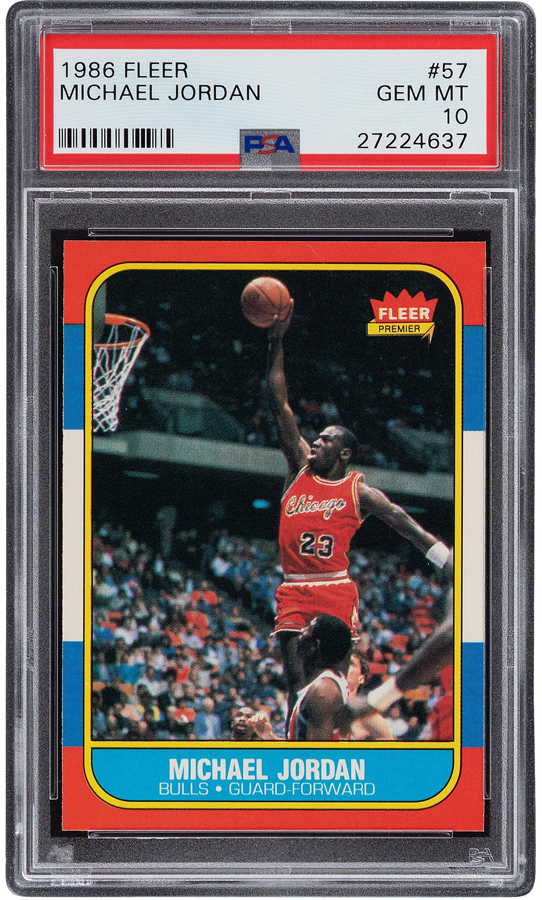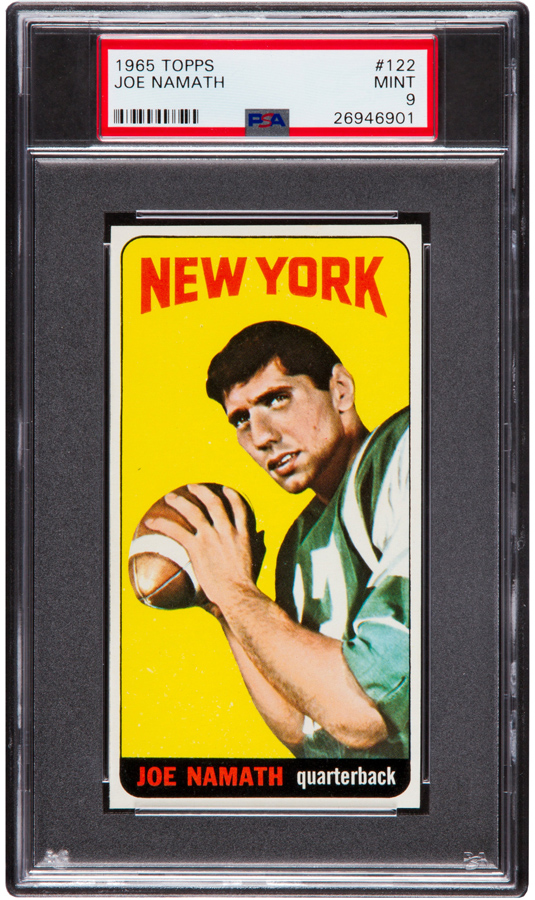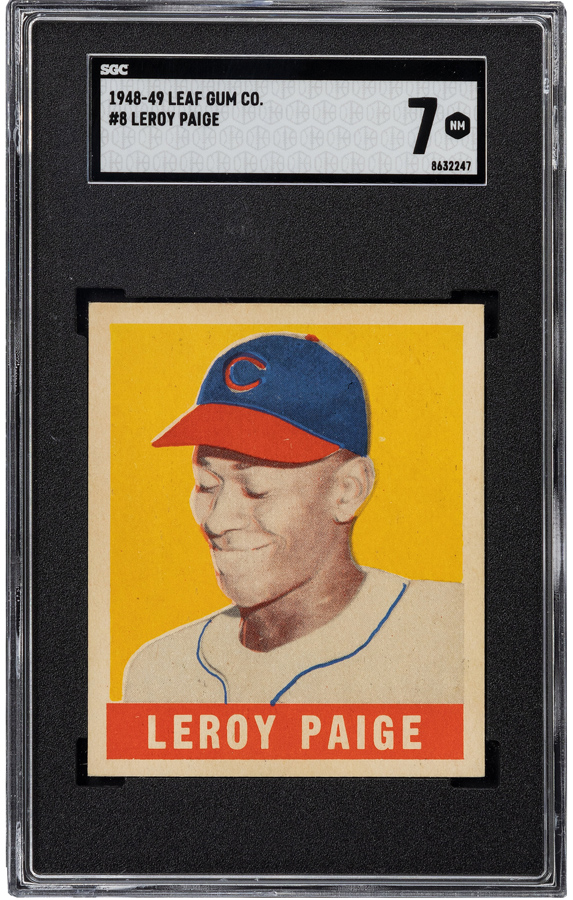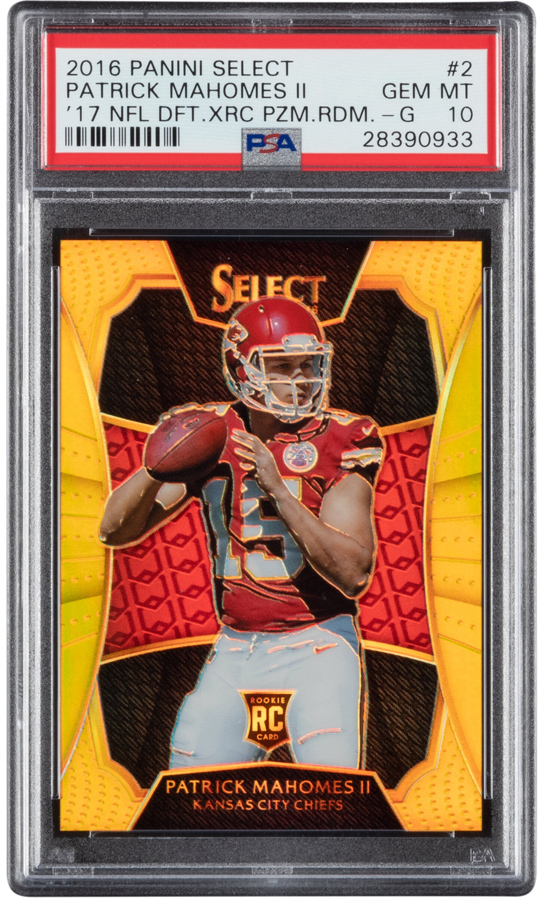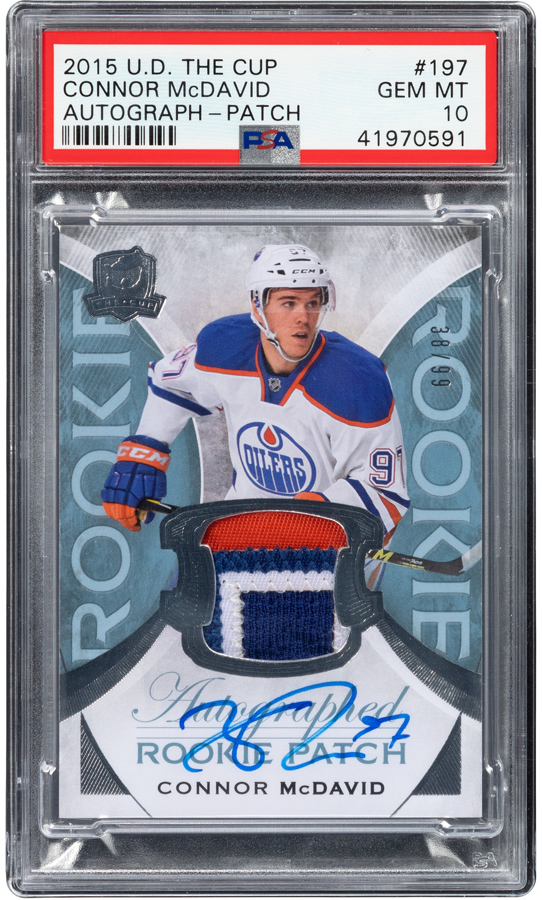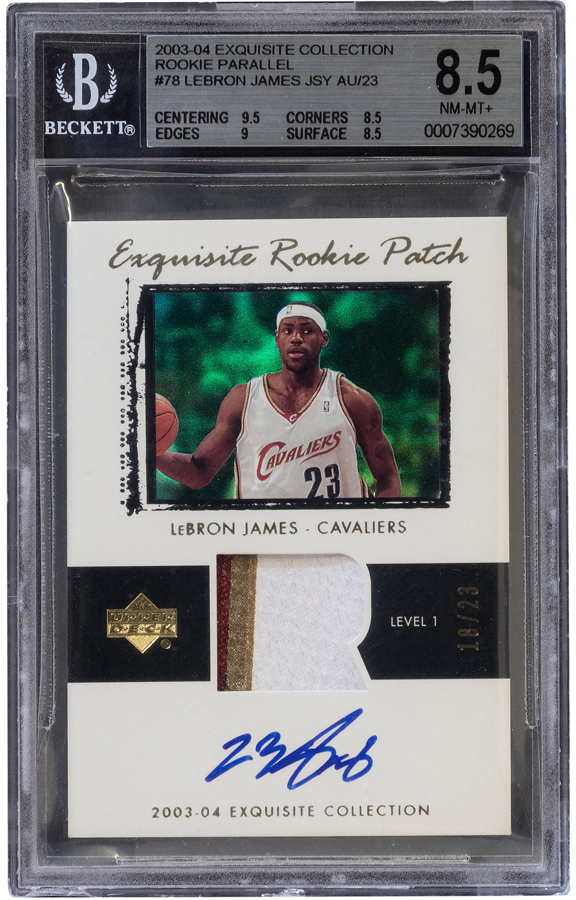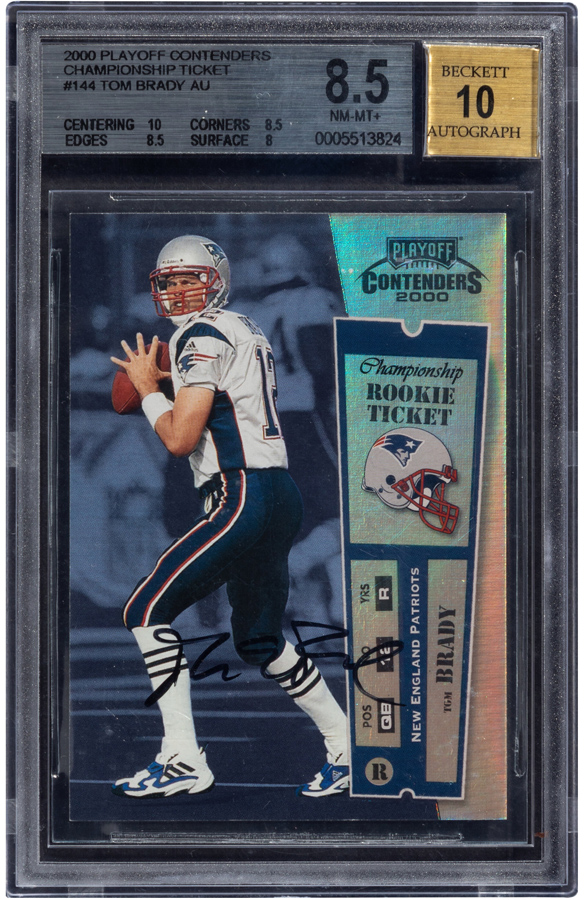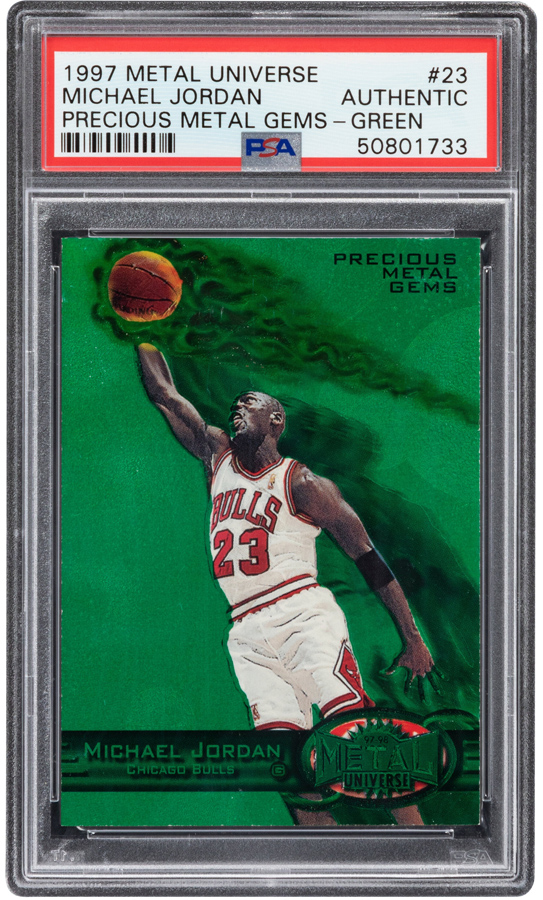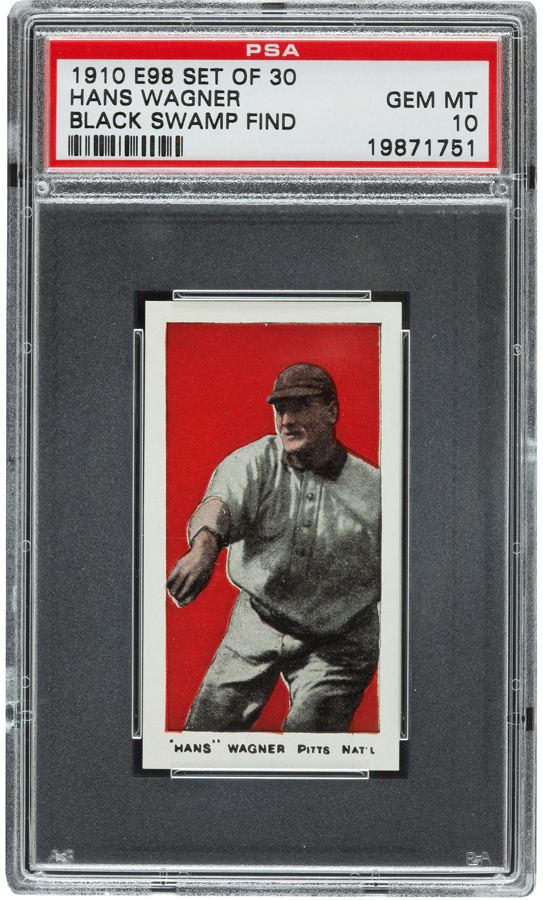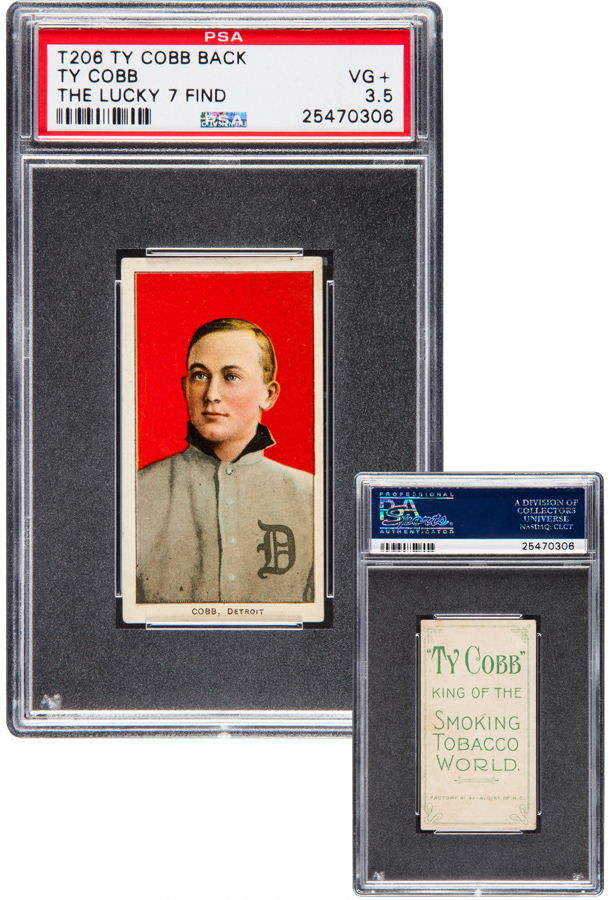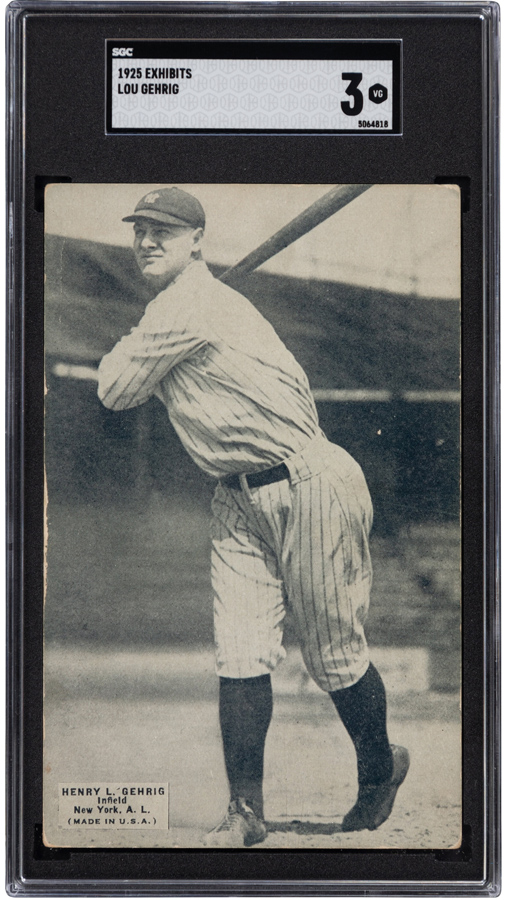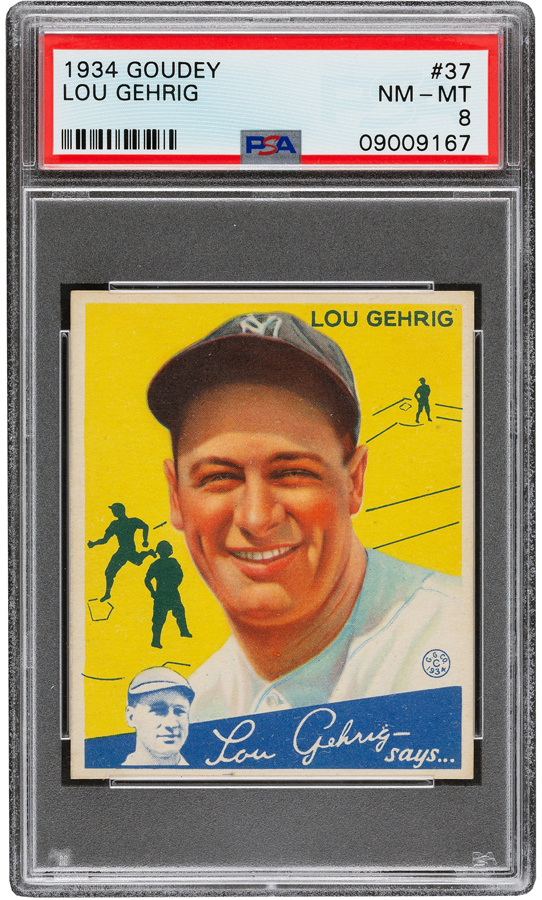FROM VINTAGE CLASSICS TO MODERN MARVELS, THE TRIED-AND-TRUE PRINCIPLES THAT CAN HELP YOU BUILD A WINNING HAND
By Joe Orlando
Trading cards. They make the sports collectibles world go round. Cards are simple in the best possible way. These tiny treasures are almost always issued as part of a defined set with a checklist to help steer the hobbyist. Two of the same card are separated only by condition and graded on a 1-to-10 scale. Once graded, the data is stored in population report databases for reference so you know exactly how many have achieved each grade. Of all the collectibles in the sports space, they are the most commodity-like. Unlike larger and more cumbersome collectibles, cards are often small in stature and easy to store in bunches.
In other words, cards are made to be collected.
Perhaps, more than anything else, cards connect us to our youth more than any other collectible type. As much as I love collecting memorabilia, I can’t recall riding bikes with my friends to the local convenience store so we could trade professional model bats for vintage figural trophies. What I do remember, like most others, is opening packs and trading cards with friends. Cards are what connect most collectors to each other and the past. Cards represent maximum nostalgia, no matter how much we have expanded our collecting horizons since those early years.
For many collectors, those memories make cards different from everything else. As one of my fellow collectors tells me all the time, those memories are baked. If you had that experience as a young person, it stays with you for the rest of your life. This factor gives cards eternal appeal for those who lived that life in their childhood. It is one of the primary reasons the card market is so much larger than others within the sports space. It is why a Mickey Mantle baseball card can not only sell for as much as a game-worn jersey or bat used by the New York Yankee icon, but it can sell for substantially more than those historic relics at times.
For others, the introduction to card collecting came much later in life. Regardless of when that first memory was born, the appeal of card collecting is unquestionable and virtually universal. It is the reigning and defending champion of all sports collectibles. For that reason, collectors must arm themselves with as much essential information as possible. The great news is that information about card collecting is more readily available than in any other sports category. As a result, the market has led the way in terms of maturity versus the others.
For those interested in exploring card collecting, we present a hobby guide containing the key factors that can impact value and improve your overall experience.
The emergence of third-party grading forever changed the card collecting hobby. It has helped level the playing field between buyers and sellers, in addition to providing enhanced structure to a market that desperately needed it following the industry boom of the 1980s.
Build Upon a Graded Foundation
For maximum clarity, efficiency and security, collectors should focus on buying graded cards. Experienced hobbyists already understand the importance of this point, but newer participants might ask, “What is card grading, and why should it matter to me?”
There was a time when the word of the seller, the person or company with a direct financial interest in the sale of the item, was the only opinion provided to the buyer about its authenticity and level of quality. To solve the once unavoidable conflict of interest inherent in the scenario described above, third-party grading services emerged to provide an independent opinion that traveled with the card no matter how many times it was sold thereafter.
Once third-party services grade the cards on a scale of 1 to 10, with 10 being best, they are placed in a tamper-evident holder and assigned a unique serial number, which is registered in the company’s database for reference. Graded cards are easier to sell, store and handle than ungraded cards. Graded cards also provide peace of mind for the buyer and liquidity to the seller since they are the closest things the sports collectibles industry has to commodities.
Our first principle has become even more relevant in recent years, as the sports cards business has enjoyed an unprecedented influx of participation, resulting in recalibrated price levels for virtually every card market segment.
Familiarizing yourself with each grading service brand and understanding their level of credibility or market share, which can vary depending on the types of cards at issue, is vital. Some third-party brands have a more substantial presence in vintage, while others have made more of an impact in modern. It is also important to remember that brand power can change over time. At the point of purchase, even if you intend to hold the item indefinitely, it is imperative that you think about the future and resale value.
We are all temporary custodians of the cards.
Key takeaway: Minimize risk and maximize your experience by buying, selling and trading cards graded by reputable third-party services.
The art of evaluating eye appeal is all about context. Instead of comparing a 1939 Play Ball Ted Williams rookie to his 1954 Topps card #250, you must determine how one 1939 Play Ball Williams measures up against others in its specific grade class.
Eye Appeal: Look Beyond the Number on the Label
As we stated in the introduction and again under the first principle, unlike most sports memorabilia categories, trading cards are commodity-like in nature since the most significant factor in their valuation is the numeric grade. Remember, the higher the grade, the more valuable the card is. But there is another factor in the desirability of the card that should not be overlooked – eye appeal.
So, what is eye appeal, and why is it important? The exercise is about context when it comes to cards and identifying what constitutes exceptional eye appeal. In this case, the more precise question is “How does one example of a specific card compare to other examples of that same card in the same grade regarding its more obvious visual attributes?”
Enlarge

It is not a comparison between one card type or set with another. Visual appeal can differ from issue to issue based on its design, but that is not the kind of comparative analysis we are describing here. It is not the process of comparing a 1939 Play Ball Ted Williams #92 to a 1954 Topps Ted Williams #250 or even to other cards in the 1939 Play Ball set. It is about comparing a 1939 Play Ball Williams to other 1939 Play Ball Williams cards.
Experience is required here because you need to understand the potential variance in appearance for that particular card. Talking with those knowledgeable about the card issue and studying as many examples of the card as possible are both helpful in making the determination. Understanding how one example’s aesthetic attributes stack up against most in the category is the key to identifying exceptional quality when it presents itself.
Card grading combines science and art, but it is essentially a technical process. Yes, eye appeal is a factor in card grading, but its power is limited. For example, a card with nearly perfect centering and brilliant color or registration can only ascend so far up the grading scale if it also features even wear on all four corners.
The degree of eye appeal might be the difference between one grade and another, but it cannot propel a VG-EX 4 card to Mint 9 status. In addition, as you travel down the graded card scale, you will see a broader variance in how each card looks since the number, or degree, of possible defects increases. As a result, one could argue that eye appeal is even more germane when it comes to cards graded in the bottom half of the scale.
The strength of a card’s eye appeal, in any grade, can make a meaningful difference in market value. Measuring eye appeal is not about what the card might look like in a dark room, under a halogen light with magnification. It is about what the card looks like held in your hands, at arm’s length, with the naked eye.
The impression a card makes in a non-grading environment can create valuation premiums within each grade.
Key takeaway: Frequently, cards are graded according to what most people cannot see, but once they are, cards are further valued by what the average person can see.
Collecting cards of active players can be exciting since you can watch the athlete’s story develop right before your eyes, but it can come with a degree of risk that collectors should be cognizant of, especially when the dollars become significant.
A Balanced Card Collection: Vintage Versus Modern
When the sports card market surges, it is often led by spectacular growth in the ultra-modern market. It is easy to understand why. The athletes and their accomplishments are fresh in our memory. In fact, we can watch the stories of current stars unfold right before our eyes. Contemporary sports offer an authentic reality show, and, much like fantasy sports, the action takes place in real-time. Watching an athlete’s career develop is like watching sports itself. It is unscripted theater. Part of the draw is that the outcome is unknown.
While the attraction to collecting active athletes is understandable, buyers must weigh the risks and rewards of each potential purchase. More importantly, buyers on the verge of diving into the card market should consider a balanced approach between modern and vintage, or at least cards that feature established names, instead of putting all your eggs into the “unproven” basket. Of course, collectors should always buy what they like, but it would be shortsighted not to consider the potential risks in ultra-modern cards.
The risk factor is critical when the monetary commitment starts getting significant, and some modern cards these days can fetch well into five, six or even seven figures. Factors such as disappointing performance, injury and off-the-field controversy can change a player’s outlook and card in the blink of an eye. Like any other market, the vintage card market is susceptible to ups and downs, but the swings are usually not nearly as sudden or substantial when they occur.
Not only can the legendary cards of the past help bring balance to your collection from a financial perspective, but they can also add to the fun as you dive deeper into history.
Key takeaway: Modern card action can be mesmerizing, but the ironclad icons can help steady the collecting ship.
One of the appealing aspects of modern collecting is, in some cases, knowing exactly how many of each card were made, like the above cards of established icons Michael Jordan and Tom Brady, which have become some of the hobby’s most desirable issues.
Discern Between Survival Rates and Manufactured Scarcity
In the trading card world, rarity often rules just like in every other hobby segment. The scarcer a card is, the more valuable it becomes, assuming everything else about one card versus another is equal. When the supply is low, a minuscule upswing in demand volume can cause volcanic increases in price. In addition, pride of ownership should never be underestimated in this market. Claiming that you own something that few or no others have produces bragging rights, which can also substantially impact value.
Access to card population data by grade has helped immensely in the vintage world. Each grading service compiles what is known as a population report, which is a census of every grade assigned in its database. The report not only provides the total number of cards graded within larger groupings such as set and type, but it also reveals the exact number of grades rendered within each category for each specific card. For example, you can see how many 1952 Topps Mickey Mantle card submissions have achieved the 1 or 10 grades and every grade in between.
Occasionally, a great vintage find can shake things up in the market. That was certainly the case when ‘The Black Swamp’ and ‘Lucky 7’ finds of E98 and T206 Ty Cobb (with Cobb backs) baseball cards changed things forever, but most vintage card pictures are painted accurately with the help of population reports.
Buyers today have a much greater understanding of scarcity than ever before. This essential data has been compiled by each grading service, some over a few decades, and it helps provide the proper context about each card. That said, the information and its accuracy are fluid since population data is updated daily. In other words, the report is never a truly finished product. The ever-evolving nature of this report is even more apparent when it comes to scarcity by condition, which affects both vintage and modern cards.
The emergence of and demand for limited-edition cards has skyrocketed in the modern collecting world. What was once frowned upon by some collectors in the past has become an overwhelmingly positive and influential force in the market today. Knowing exactly how many copies of a particular card were made is an advantage these cards have over rare vintage issues. Does the vintage data usually paint a relatively accurate picture? Yes. Barring a significant “find” that changes the landscape of available cards, population data is extremely helpful.
While new discoveries occur occasionally, the truth is that buried treasure tends to dry up as the years pass.
Key takeaway: Scarcity of any kind can elevate a card’s appeal, but context about its type is what matters most.
While rare, hobby sentiment can change over time. A perfect example is the 1925 Exhibits Lou Gehrig. Once considered esoteric by most collectors and far less desirable than his 1934 Goudey #37, the Exhibits card is now Gehrig’s most valuable, grade-for-grade.
Veering Too Far From Mainstream Issues Comes With Risk
Collectors love to hunt. It is one of the aspects of this hobby that makes the endeavor so fun. Collectors hunt for missing links and grails, and, not to be overlooked, they hunt for value. One way collectors might attempt to unlock value is by looking for cards that have not yet had their moment in the spotlight. In other words, they try to identify and acquire cards that appear undervalued, at least in their minds. Sometimes, this approach pays off when collector sentiment changes in the hunter’s favor.
A terrific example of this would be the 1925 Exhibits Lou Gehrig. For decades, this card was labeled as a semi-esoteric issue, whether it deserved it or not. The Exhibits took a backseat to other, more popular Gehrig cards, such as those found in the DeLong and Goudey sets. Today, a card once an afterthought for many collectors has become the undisputed Gehrig rookie card and his most valuable grade-for-grade. This success story, however, is the exception, not the rule.
While it is true that positive, delayed reactions can happen, and cards start getting viewed in an entirely different light, the moral of the story here is that if you decide to veer too far from what the collecting consensus views as popular or desirable, it comes with a degree of risk. It does not mean a collector cannot find some intriguing and more affordable alternatives to the staples in the card world.
► More Collector’s Guides
For additional collecting advice on topics ranging from fine minerals and rare books to art glass and action figures, visit our dedicated Collector’s Guide page.
Unfortunately, if an individual card or complete set is tagged with an “undervalued” or obscure label, it usually stays that way. The hobby forms its collective opinion about different subjects over extended periods, so it often takes a lot to change perception. Sticking to the mainstream is almost always the safer route. The market is much more liquid for issues that are instantly recognizable. The favorites tend to dominate market action because collector want lists are usually built around them.
In the end, buying cards that the collecting community feels are the undoubted hobby classics is often far more sensible than trying to wish a card’s popularity into existence.
Key takeaway: Betting on the underdog can be fun, but once a card earns a certain reputation, the classification tends to stick.
Whether you crave the vintage cardboard treasures that have become the foundation of our hobby or are intrigued by the electric look and feel of the modern market, we hope this guide proves helpful on your collecting journey.
What’s in the cards for you?
 JOE ORLANDO is Executive Vice President of Sports at Heritage Auctions. He can be reached at JoeO@HA.com or 214.409.1799.
JOE ORLANDO is Executive Vice President of Sports at Heritage Auctions. He can be reached at JoeO@HA.com or 214.409.1799.

